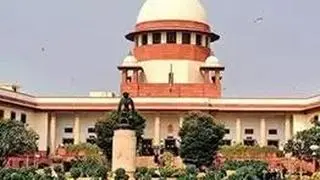Bharat Stage VI emission norms will pull down the market share of diesel cars from 42 per cent to 28 per cent due to higher costs. While the new norms are expected to kick in from April 2020, the proposal to introduce BS VI in the National Capital Region region as early as next year, could hasten the loss in market share.
Analysts expect the prices of diesel cars to go up by up to ₹2 lakh depending on the engine displacement. With the gap in the prices of diesel and petrol cars narrowing, there will be little incentive for buyers to opt for diesel cars.
“Post BS VI, the share of diesel cars in passenger vehicles is expected to drop to about 28 per cent in FY20,” Suraj Ghosh, Principal Analyst, SouthAsia Powertrain Forecasts, IHS Markit Automotive, told Business Line .
Sales of domestic passenger vehicles (PV) were at 30,46,727 units last fiscal, of which more than 40 per cent were diesel cars. During the peak of dieselisation (FY 2012), diesel cars commanded a market share as high as 59-60 per cent.
At that time the difference in the price of petrol and diesel was around ₹40; today, it has narrowed down to ₹17, making diesel cars less attractive.
New additions With BS VI norms, the pollutant limits will become more stringent. BS VI-compliant diesel vehicles will have to reduce nitrogen oxide (NOx) emission by 68 per cent and particulate matter emission by five times compared to the current BS IV standards. Morover, emission-reduction technologies required for controlling emission to this level is expensive.
“Diesel cars will need new exhaust, diesel-particulate filters and other multiple layers of changes. New components will come in and existing engines will be redesigned, which will increase the price of compatible engines manifold,” said VG Ramakrishnan, Managing Partner and MD at Avanteum Advisors.
This will lead to a disproportionate difference in the cost of diesel and petrol cars. The cost addition, says Ghosh, will depend on the engine size – a diesel car with an engine size of 1.5 litre could become costlier by ₹50,000 to ₹60,000.
“This would result in a 50 per cent increase in the price differential between small diesel and petrol cars. For larger diesel vehicles, the price addition could be ₹1.25 lakh for a 2-liter diesel engine and about ₹1.5 lakh or more for larger ones,” says Ghosh. This will particularly impact smaller cars with diesel engine as there won’t be any incentive for buying them.
“Smaller cars with diesel engines may become unviable and their production may be discontinued due to cost escalation and lack of demand,” said Ramakrishnan.
SUVs safe Ghosh estimates that a significant share of A and B segment customers will move to petrol cars after BS VI because of the significantly lower prices. But one segment will continue to thrive – diesel-based utility vehicles.
“SUVs, MUVs and other types of utility vehicles (UVs) are still expected to have diesel-inclined customers, though the share will definitely come down,” he said.
For SUVs, petrol may not be a viable option for reasons of mileage and price, said Ramakrishnan.
A typical diesel engine-powered car gives 25-30 per cent more mileage than a similar-sized petrol version, and can also travel longer distances. That also helps customers with higher usage to recover their investment. So companies such as Toyota, with a strong diesel portfolio, are less likely to be affected, he added.








Comments
Comments have to be in English, and in full sentences. They cannot be abusive or personal. Please abide by our community guidelines for posting your comments.
We have migrated to a new commenting platform. If you are already a registered user of TheHindu Businessline and logged in, you may continue to engage with our articles. If you do not have an account please register and login to post comments. Users can access their older comments by logging into their accounts on Vuukle.